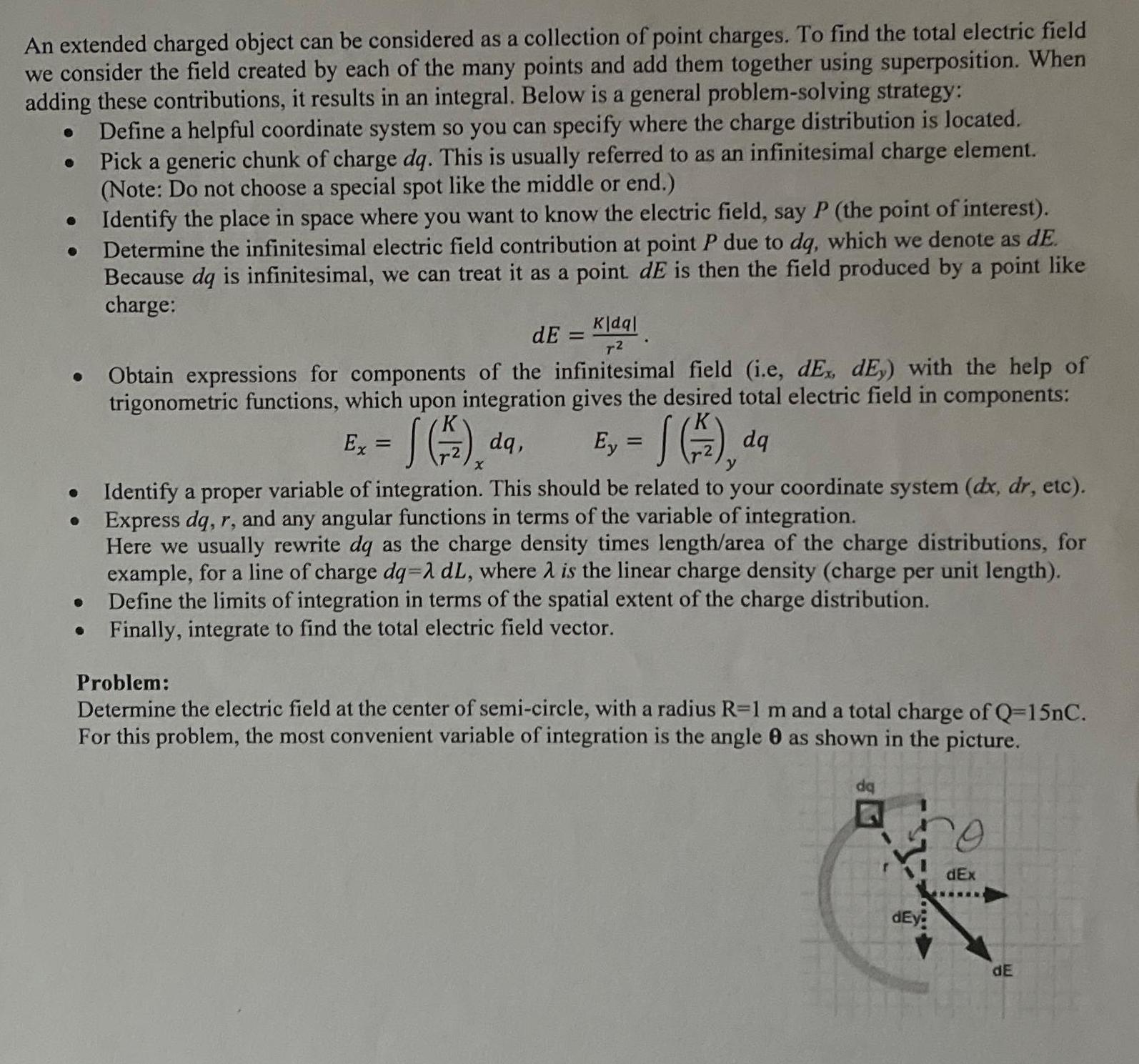Answered step by step
Verified Expert Solution
Question
1 Approved Answer
An extended charged object can be considered as a collection of point charges. To find the total electric field we consider the field created

An extended charged object can be considered as a collection of point charges. To find the total electric field we consider the field created by each of the many points and add them together using superposition. When adding these contributions, it results in an integral. Below is a general problem-solving strategy: Define a helpful coordinate system so you can specify where the charge distribution is located. Pick a generic chunk of charge dq. This is usually referred to as an infinitesimal charge element. (Note: Do not choose a special spot like the middle or end.) Identify the place in space where you want to know the electric field, say P (the point of interest). Determine the infinitesimal electric field contribution at point P due to dq, which we denote as dE Because dq is infinitesimal, we can treat it as a point dE is then the field produced by a point like charge: 0 dE = K|dq| Obtain expressions for components of the infinitesimal field (i.e, dEx, dE,) with the help of trigonometric functions, which upon integration gives the desired total electric field in components: Ex == x dq, Ey = (2), dq Identify a proper variable of integration. This should be related to your coordinate system (dx, dr, etc). Express dq, r, and any angular functions in terms of the variable of integration. Here we usually rewrite dq as the charge density times length/area of the charge distributions, for example, for a line of charge dq= dL, where is the linear charge density (charge per unit length). Define the limits of integration in terms of the spatial extent of the charge distribution. Finally, integrate to find the total electric field vector. Problem: Determine the electric field at the center of semi-circle, with a radius R=1 m and a total charge of Q-15nC. For this problem, the most convenient variable of integration is the angle 0 as shown in the picture. 2 dEy dEx dE
Step by Step Solution
There are 3 Steps involved in it
Step: 1

Get Instant Access to Expert-Tailored Solutions
See step-by-step solutions with expert insights and AI powered tools for academic success
Step: 2

Step: 3

Ace Your Homework with AI
Get the answers you need in no time with our AI-driven, step-by-step assistance
Get Started


